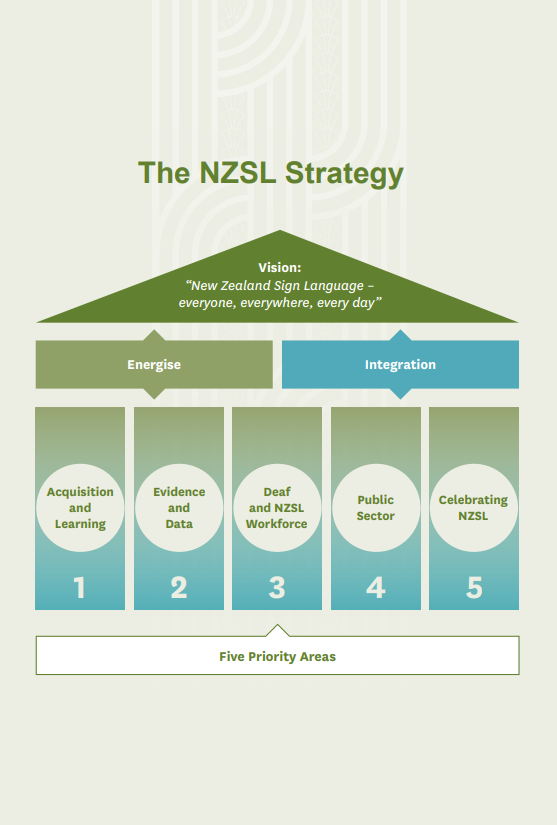Embedded video:
Five priority areas have been identified to support and enable the change needed:
- Acquisition and Learning: Enable deaf children / tamariki, and children who use NZSL to communicate, and families and whānau to acquire and use NZSL.
- Evidence and Data: Build an evidence-based profile of Deaf people and NZSL users.
- Deaf and NZSL workforce: Ensure there is a workforce to support the acquisition and use of NZSL.
- Public sector: Improve attitude, acquisition, and use of NZSL across the public sector.
- Celebrating NZSL: Enhance the status of NZSL in New Zealand and celebrate NZSL across society and cultures.
These five priority areas reflect the five language learning priorities in the first NZSL Strategy, and builds on them to:
- ensure appropriate opportunities for NZSL users, particularly deaf children, to learn and use NZSL
- build an evidence-based picture of the experiences of NZSL users, including developing measures (indicators) to show change or progress
- raise awareness and knowledge of NZSL and Deaf culture in New Zealand, and embed NZSL into New Zealand society and culture.

NZSL Strategy